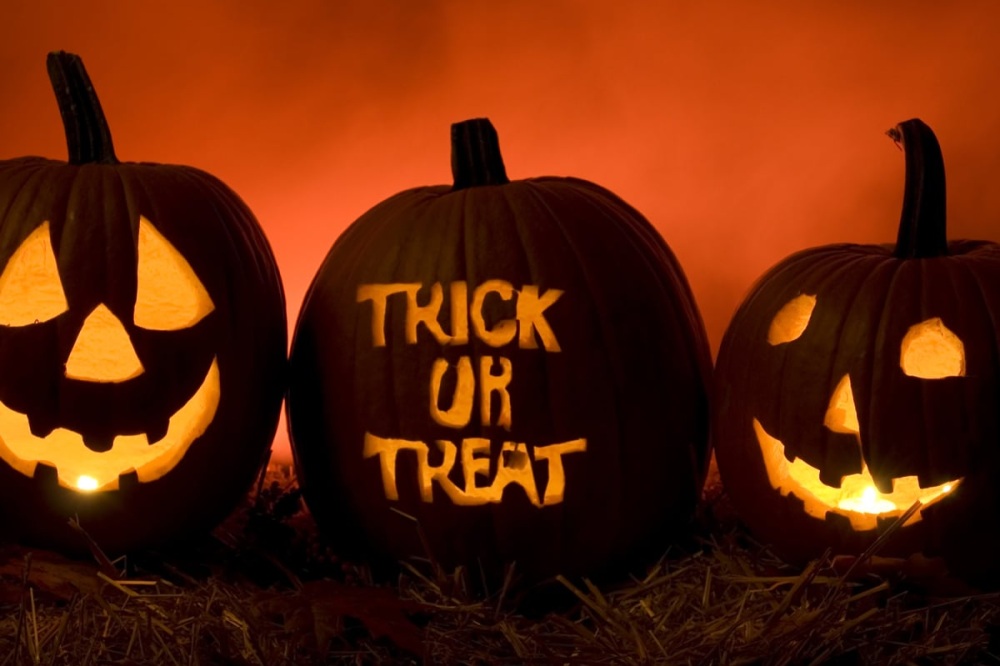
Halloween these days provides a time for the predictable annual debate about whether or not Christians should participate in Halloween, and many participants in the debate express themselves very strongly. As we approach that time, I would like to offer a few irenic reflections on the controversial October event.
Everyone presumably acknowledges that there is nothing wrong with children dressing up as fairies, Disney characters, Marvel superheroes, and (my own favourite when I was a child) black cats in order to go door to door with their friends after dark to collect candy. The argument against Halloween is that it also glorifies violence, gore, and death, so that it is unsuitable for Christians to participate in Halloween. Collecting candy is fine; it is the frightening stuff that comes afterward that is the problem. Halloween trades in things like graveyards and corpses and ugly witches on broomsticks and bats and cobwebs and Frankenstein monsters. So, the question arises: why do people delight in such scary stuff?
In this regard it is interesting to observe that such scary stories once formed a part of Christmas celebrations here in the West. Yep: Christmas, not Halloween. Thus the verse from the Christmas song It’s the Most Wonderful Time of the Year: “There’ll be parties for hosting, marshmallows for toasting, and carolling out in the snow. There’ll be scary ghost stories, and tales of the glories of Christmases long, long ago.” Why “scary ghost stories” at Christmas? Because people delighted to huddle around the hearth and tingle with excitement. They loved to be scared and experience the chemical rush that came with it and then to laugh about it afterward.
That is also why scary stories of monsters and dangerous people and ghosts were a staple at scouting camp-outs: children would huddle around the campfire while the Scout-master told scary stories and the children all jumped with fear and then laughed and giggled afterward. That is the point of the spooky fun house at amusement parks. When I was a child, there was such a fun house where one rode in a little car and monsters jumped out at you to scare you. Significantly the ride was called, “Laff in the Dark”.
 Children delight in being thrilled by such things, for the same reason that they delight in being thrilled (that is, terrified) by the roller-coaster—because they know the thrill will not last, and will not harm them. They return to real life energized from having received a quick shot of childish adrenaline. Monsters and ghost stories are fun and energizing. And children are not stupid: they can distinguish between scary things that are not dangerous (like monsters and ghosts) and scary things that are dangerous (like bullies and strangers inviting them into a van). They know that monsters are safe and bullies are not.
Children delight in being thrilled by such things, for the same reason that they delight in being thrilled (that is, terrified) by the roller-coaster—because they know the thrill will not last, and will not harm them. They return to real life energized from having received a quick shot of childish adrenaline. Monsters and ghost stories are fun and energizing. And children are not stupid: they can distinguish between scary things that are not dangerous (like monsters and ghosts) and scary things that are dangerous (like bullies and strangers inviting them into a van). They know that monsters are safe and bullies are not.
I suggest then that the presence of scary ghost stories at Halloween now functions in the same way as scary ghost stories once functioned at Christmas—not as a glorification of ghosts, goblins, monsters, but as a kind of campfire adventure. And—for some adults dressing up at Halloween—as a fond attempt to recapture some of their all-too-soon vanished childhood. These adults do not relate to scary ghost stories like the children do, but like the Scout-master telling the stories to the children. It is all a part of the game.
Today our culture is in a time of change and transition, and this change may include Halloween also. The pastoral challenge for the Church today is to discern what the various things in our culture mean, and to respond appropriately to each one in turn. If a Halloween celebration has large amounts of graphic gore, this is a problem, since this does indeed seem to glorify violence—or at least contribute to our being desensitized to it. But if the Halloween celebration consists of pictures of bats, spider webs, and old hags riding brooms, of wearing funny costumes, and of eating lots of junk food, this is less problematic.
The debate about Christians celebrating Halloween is therefore too broad to answer directly. One first needs to answer the question, “Which Halloween?” Obviously, all these things exist on a spectrum, with ghost stories at one end of the spectrum and dripping mangled bodies at the other end. Where along this wide spectrum is “your” Halloween? (I leave out of our reckoning certain groups that co-opt the celebration as a vehicle for their own strange practices. Obviously, their celebration of Halloween is problematic.)
If we fail to denounce things that are genuinely evil and worthy of denunciation, we will justly deserve censure. If we denounce things that are essentially harmless, we may lose our credibility with the world we want to convert. Some Christians in the 1960s denounced the Beatles for their long hair, and Elvis Presley for his gyrations. Such things now seem harmless and benign, and no one now denounces the Beatles for wearing bangs, or Elvis for his moves when singing “Blue Suede Shoes”. In the same way, if the Church denounces the practice of children for wearing costumes and pretending to be fairies or Spider-Man while going door to door collecting candy, this may result in a loss of credibility in the eyes of the world. And it’s not like we have any credibility to spare. We need to distinguish and discern before we decide.
Source: No Other Foundation


